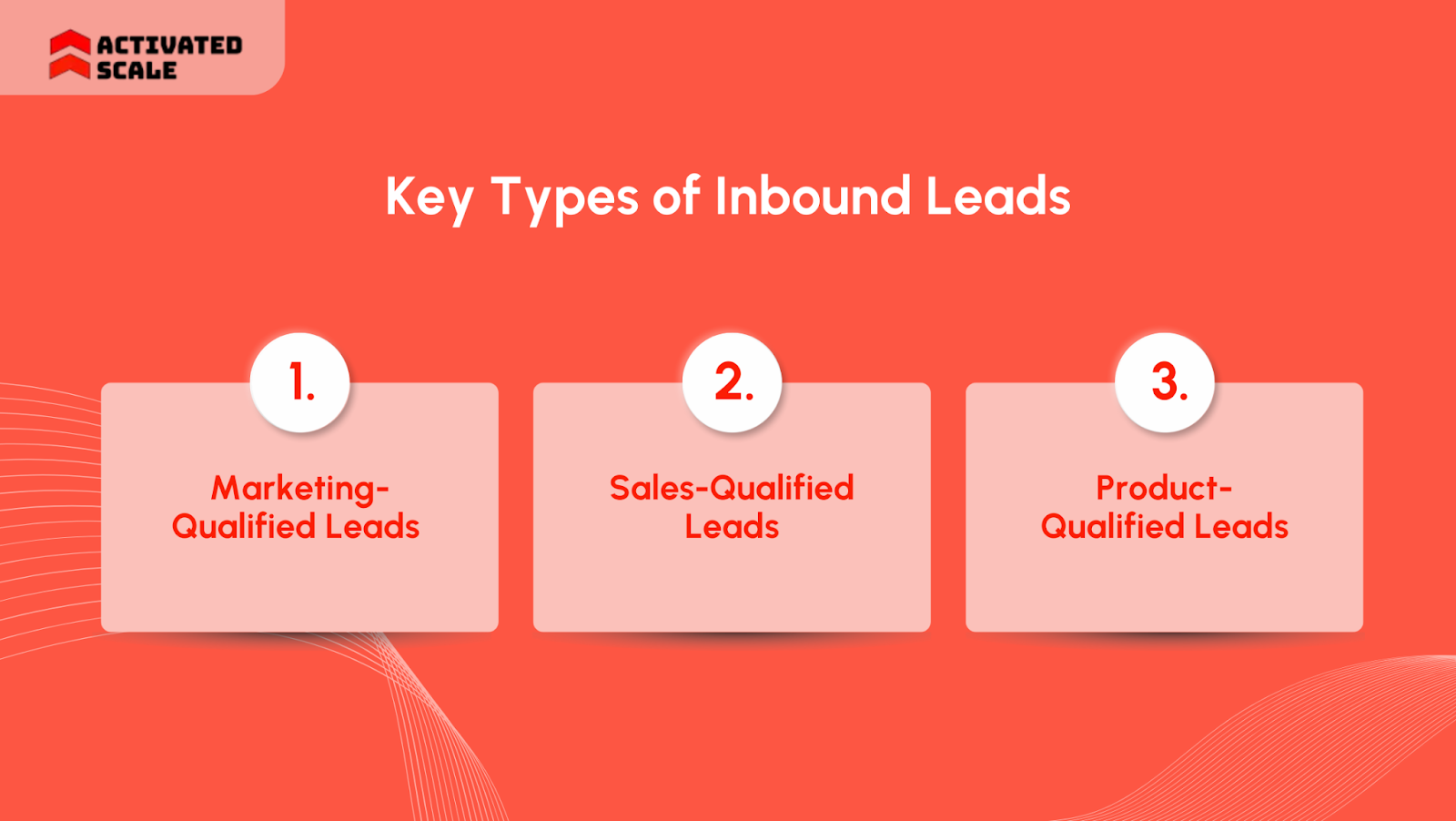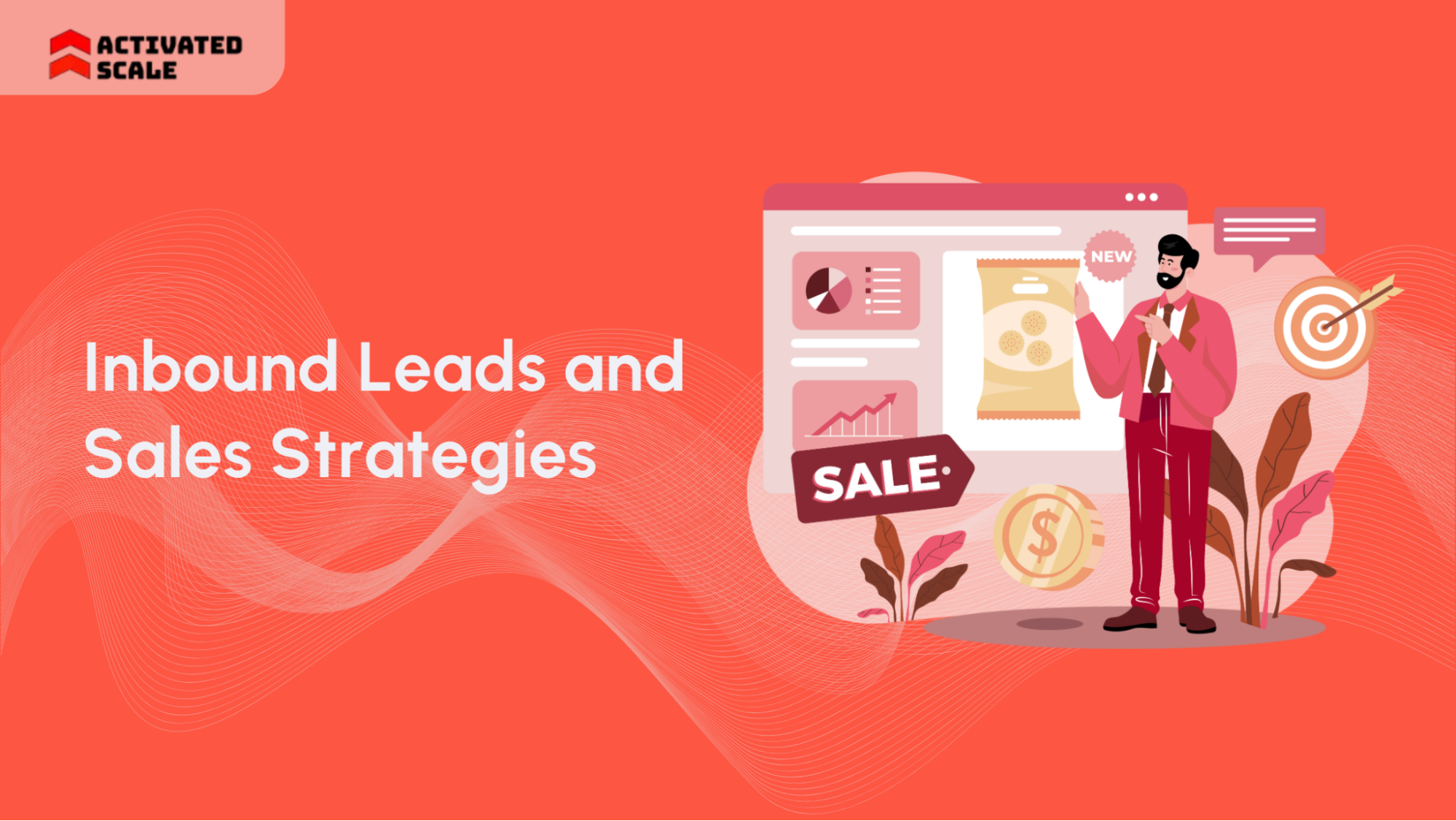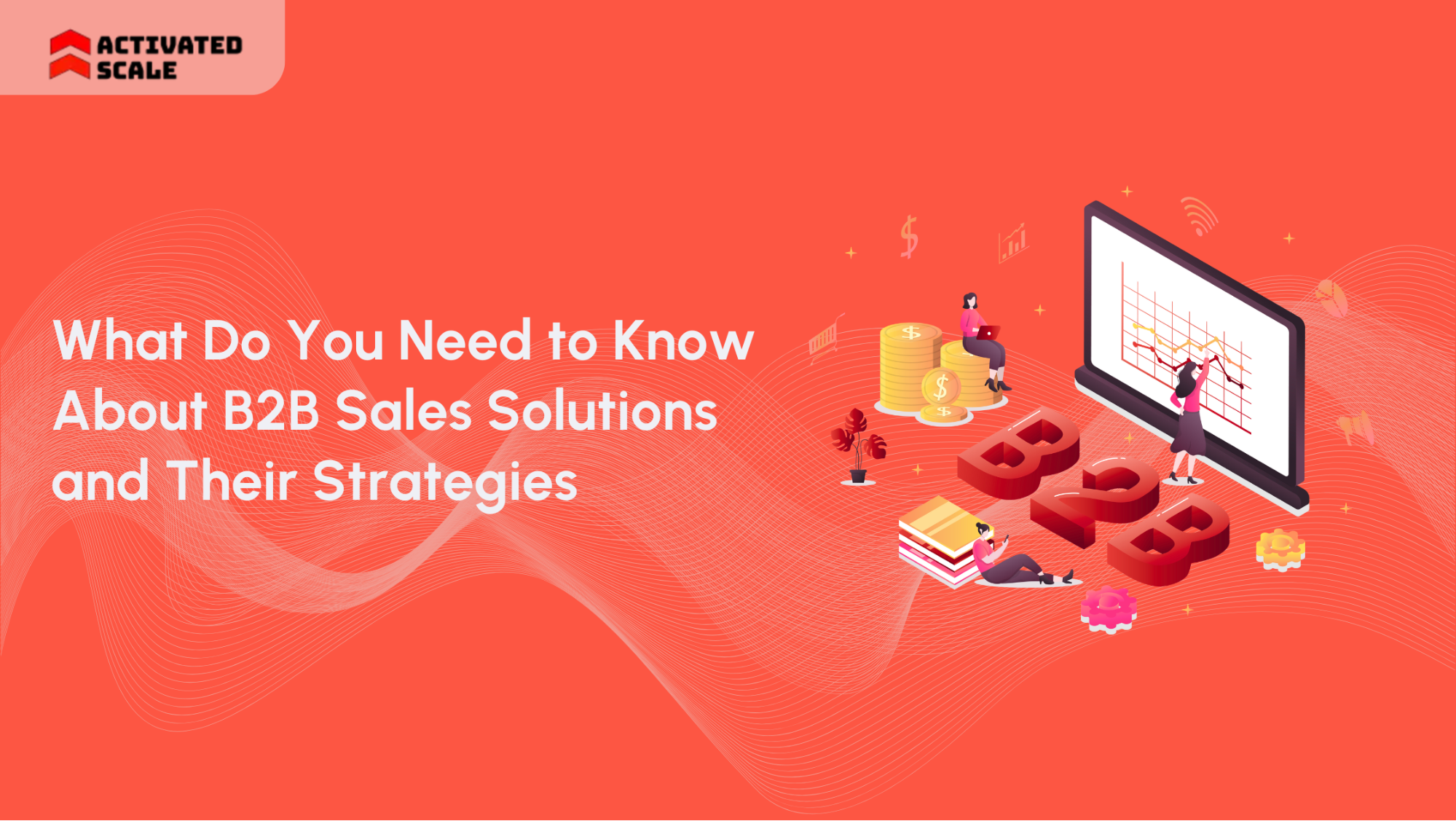As a startup founder or SaaS leader, you know the struggle: balancing the need for an experienced sales team with the challenge of growing within a tight budget. It’s a risky game; hire too fast, and you’re stuck with costly, unproven talent; wait too long, and your sales pipeline stagnates.
What if you could avoid this dilemma? Integrating inbound strategies with AI-driven automation helps companies boost conversion rates by up to 21% and cut sales costs by 60%.
This blog will break down how you can optimize your sales process without the hassle of making rushed hires. We’ll learn actionable tactics for attracting and converting leads, creating a repeatable sales strategy, and scaling your sales team. Let’s turn these challenges into growth opportunities.
Key Takeaways
- Inbound Leads Drive Growth: Inbound leads like MQLs, SQLs, and PQLs are more likely to convert, as they’ve already shown interest in your solution.
- Inbound vs. Outbound: Inbound leads are cost-effective and build long-term relationships, while outbound methods can produce faster results but require more resources.
- Effective Lead Generation: Use content marketing, SEO, social media, and interactive content to attract high-quality inbound leads.
- Nurturing Inbound Leads: Implement lead scoring and nurturing campaigns to keep prospects engaged and guide them through the sales funnel.
- Best Practices for Inbound Sales: Utilize the right tools, listen actively to prospects, and maintain transparent communication to build trust and close deals.
What is an Inbound Lead?
An inbound lead is a potential customer who shows interest in your product or service by engaging with your content or marketing channels. These leads are already familiar with your brand and are taking action to connect with you.
For example, they might discover your company through a blog post, then sign up for a newsletter or request a demo. Inbound leads are more likely to convert than cold leads because they've already expressed interest.
Key Types of Inbound Leads

1. Marketing-Qualified Leads (MQLs)
These leads have engaged with your content, like downloading a resource or signing up, but aren't ready for direct sales contact.
2. Sales-Qualified Leads (SQLs)
These leads have reached out to your sales team, typically asking about pricing or specific product details, indicating they are ready for further engagement.
3. Product-Qualified Leads (PQLs)
Leads who have tried your product (e.g., through a free trial or freemium version) and are showing a strong interest in becoming paying customers.
Inbound leads are crucial, especially in B2B sales, where sales cycles tend to be longer. Unlike outbound leads that require proactive outreach, inbound leads have initiated contact, making them more likely to convert.
Now that we know what inbound leads are, let’s compare them to their outbound counterparts to understand the differences in approach.
Inbound vs Outbound Lead Generation
When it comes to generating leads, businesses often turn to two distinct approaches: Inbound and outbound lead generation. Both strategies have their unique strengths and challenges, and understanding the differences can help you select the most suitable approach for your business goals.
Here’s a breakdown of the key differences between inbound and outbound lead generation:
While both inbound and outbound lead generation have their place, many businesses find success in combining both methods.
Ready to optimize your sales process? Activated Scale helps scale your team with experienced, on-demand sales professionals. We provide the leadership and expertise to drive quality leads and conversions, whether you need experienced SDRs, AEs, or Fractional VPs of Sales.
Also Read: A Guide to Emerging Sales Tools for Lead Generation in 2025
With that distinction in mind, let’s explore how inbound leads work and how they move through your sales process.
How Inbound Leads Work

Generating inbound leads is about attracting potential customers, nurturing them, and guiding them through the sales process. Here’s how it works:
1. Attract
Make sure your brand is visible across the right channels:
- Use content marketing tools, such as blog posts, how-to guides, and videos, to help prospects discover you organically.
- Focus on drawing in high-quality leads who are a good fit for your product and looking for solutions to their problems.
2. Engage
Once you have their attention, deepen the relationship:
- Capture contact details with sign-up forms or gated content.
- Engage leads with personalized email marketing and tailored sales consultations that address their pain points.
- Use lead scoring to identify high-potential leads and prioritize follow-up.
3. Close
When leads are qualified, it’s time to seal the deal:
- Sales reps use product demos and consultations to help prospects finalize their decisions.
- Disqualify leads who are no longer interested to focus efforts on the best prospects.
4. Delight
Keep customers happy after the sale:
- Follow up with personalized support, whether through onboarding or customer service.
- Collect customer feedback to improve offerings and build loyalty.
- Satisfied customers become advocates, helping you generate more inbound leads.
Inbound leads are a process of nurturing relationships, so the goal is not just to close the deal but to build long-term, loyal customers who will advocate for your brand.
Implementing the right strategies is key, but how can you optimize them for the best results? Here are some best practices to ensure success.
Top Inbound Sales and Lead Generation Strategies

Inbound lead generation is a combination of content marketing, optimized website experiences, and personalized engagement. Blending these strategies helps effectively attract, nurture, and convert high-quality leads. Here’s a detailed breakdown:
1. Traditional Content Marketing
Content marketing is essential for driving inbound leads. Here’s how to make the most of it:
- Engaging Content: Consistently create valuable content that addresses your prospects’ pain points.
- Guest Blogging & Lead Magnets: Contribute guest posts to reputable sites or host guest authors on your blog.
- Content for Buyer’s Journey: Tailor content to fit each stage of the buyer’s journey:
- Awareness: Informational blogs and industry overviews.
- Consideration: Product comparisons and case studies.
- Decision: Detailed product info, pricing guides, and customer testimonials.
2. Engage and Nurture Leads
Once you’ve attracted leads, it’s important to nurture them. Use marketing automation to maintain consistent engagement across multiple channels, including email, social media, and digital ads.
3. Email List Building & Marketing
Building and nurturing your email list remains one of the most effective inbound lead generation strategies:
- Grow Your Email List: Use CTAs on all content (blogs, landing pages, etc.) and split-test forms for optimal conversion.
- Gated Content: Offer exclusive resources like industry reports or eBooks to capture contact information.
- Segmentation: Send tailored email campaigns based on personas and stages in the buyer’s journey. Ensure that each email addresses the recipient’s specific needs directly.
4. Webinars & Interactive Content
Interactive and live content can boost lead engagement:
- Host Webinars: Offer free webinars or virtual workshops on topics relevant to your audience. Webinars offer prospects the opportunity to interact directly with your team and deepen their connection with your brand.
- Interactive Tools: Use quizzes, assessments, and calculators to engage prospects while gathering valuable lead data. Interactive content is highly shareable and memorable, which can increase lead generation.
5. Content Upgrades & Lead Magnets
Offer more value in exchange for lead contact details:
- Lead Magnets: Provide valuable gated content, such as eBooks, whitepapers, and reports, to capture high-quality leads.
- Content Upgrades: Offer exclusive resources that fit the specific interests or needs of your prospects. This could include in-depth guides or specialized tools.
6. Social Media & Paid Ads
Utilize social platforms and targeted ads to drive inbound leads:
- Organic Social Media: Share valuable insights and engaging content to build a community. Focus on platforms like LinkedIn to target B2B prospects.
- Paid Social Ads: Use paid ads to target specific demographics or retarget visitors who have previously interacted with your content or website.
7. SEO & Landing Page Optimization
Ensure your website is discoverable and optimized to convert leads:
- Search Intent Optimization: Conduct keyword research to create content that answers the specific questions your audience is searching for. Make sure your content ranks for relevant search terms.
- Landing Page Conversion: Design landing pages with a clear purpose, optimized for conversions with compelling CTAs and persuasive copy. These pages should load quickly and be mobile-friendly.
8. Multimedia Content (Video, Podcasts, etc.)
Multimedia is a powerful way to engage prospects:
- Video: Create product demos, explainer videos, or customer testimonials to visually demonstrate your value. Video can capture attention and build trust more effectively than text alone.
- Podcasts: Use podcasts to establish thought leadership and connect with your audience on a more personal level. They can help nurture leads by providing valuable insights.
9. Referral Programs
Encourage your current customers to refer new leads:
- Incentivize Referrals: Offer discounts, exclusive content, or rewards for customers who refer others to your business. This can help expand your lead pool with qualified prospects.
10. Chatbots & Live Chat
Use automated chatbots to instantly qualify leads and route them to the appropriate resources or sales teams. This helps convert visitors into leads while they’re still engaged with your website.
Combining these tactics helps you create a solid inbound lead generation strategy that attracts, nurtures, and converts high-quality prospects.
As you implement these strategies, Activated Scale offers experienced, on-demand sales talent to help nurture and convert high-quality leads. Ready to scale your sales team? Let’s talk.
Also Read: Effective Business Development Strategies for Small Businesses in 2025
With these strategies in place, it's time to focus on the essential practices that help you convert more inbound leads into loyal customers.
Best Practices for Inbound Leads and Sales Strategies
Inbound sales are often seen as straightforward, but there are key strategies that many sales teams miss. Here are some best practices to effectively capture and convert leads:
- Utilize the Right Resources: At Activated Scale, we provide experienced, on-demand sales professionals, including SDRs, AEs, and Fractional VPs of Sales, to streamline your sales process.
- Listen More, Talk Less: Prospects reach out because they recognize the value in your solution. Focus on listening to their pain points and asking the right questions.
- Be Transparent and Honest: Avoid overselling features and be upfront about what your solution can and can’t do. This honesty sets realistic expectations and strengthens relationships.
- Be Consistent and Accessible: Timely responses are essential. Consistent and accessible communication shows your commitment and reinforces your team's efforts.
These refined practices help improve conversions while building lasting customer relationships.
Conclusion
Scaling your sales team doesn’t have to mean compromising on quality or committing to full-time hires too soon. Integrating inbound sales strategies with the right tools and building a transparent process helps drive growth effectively without the stress of making bad hires.
Activated Scale offers flexible, on-demand sales talent tailored to your needs, helping startups and growing businesses build a high-performing sales team without long-term commitments.
- Contract-to-Hire Sales Recruiting: Trial-based hiring allows you to evaluate sales talent before making a full-time commitment.
- Fractional Sales Talent: Access experienced Sales Development Representatives (SDRs), Account Executives (AEs), and VPs of Sales, when and how you need them.
- Customized Go-to-Market Strategies: Fractional VPs of Sales can design your sales playbook and refine your GTM strategy.
Don’t let your sales pipeline stagnate. Learn how Activated Scale can help you scale efficiently with experienced, on-demand sales talent. Click to get started today.
FAQs
1. How can inbound sales strategies help my startup grow?
Inbound sales focus on attracting and nurturing leads. Using targeted content and personalized outreach helps you engage prospects more effectively and drive growth.
2. What sales tools can improve my inbound strategy?
Using the right CRM and automation tools helps streamline your workflow, track leads, and ensure personalized follow-ups.
3. How can I build a repeatable sales process?
Start by identifying key steps in your sales funnel, from lead generation to closing. Then, implement tools and best practices that help you scale these steps consistently.
4. How does Activated Scale support inbound lead generation?
We provide on-demand sales talent, from SDRs to VPs of Sales, who are skilled in inbound sales tactics. They’ll help you scale your lead generation and conversion efforts.
5. What’s the advantage of using fractional sales talent for inbound sales?
Fractional sales talent allows you to scale your team quickly without the cost and commitment of full-time hires. It’s flexible, efficient, and perfect for fast-growing businesses.
The Ultimate Guide to Hiring a Salesperson!
Get the step-by-step guide to hiring, onboarding, and ensuring success!
_edi.png)




